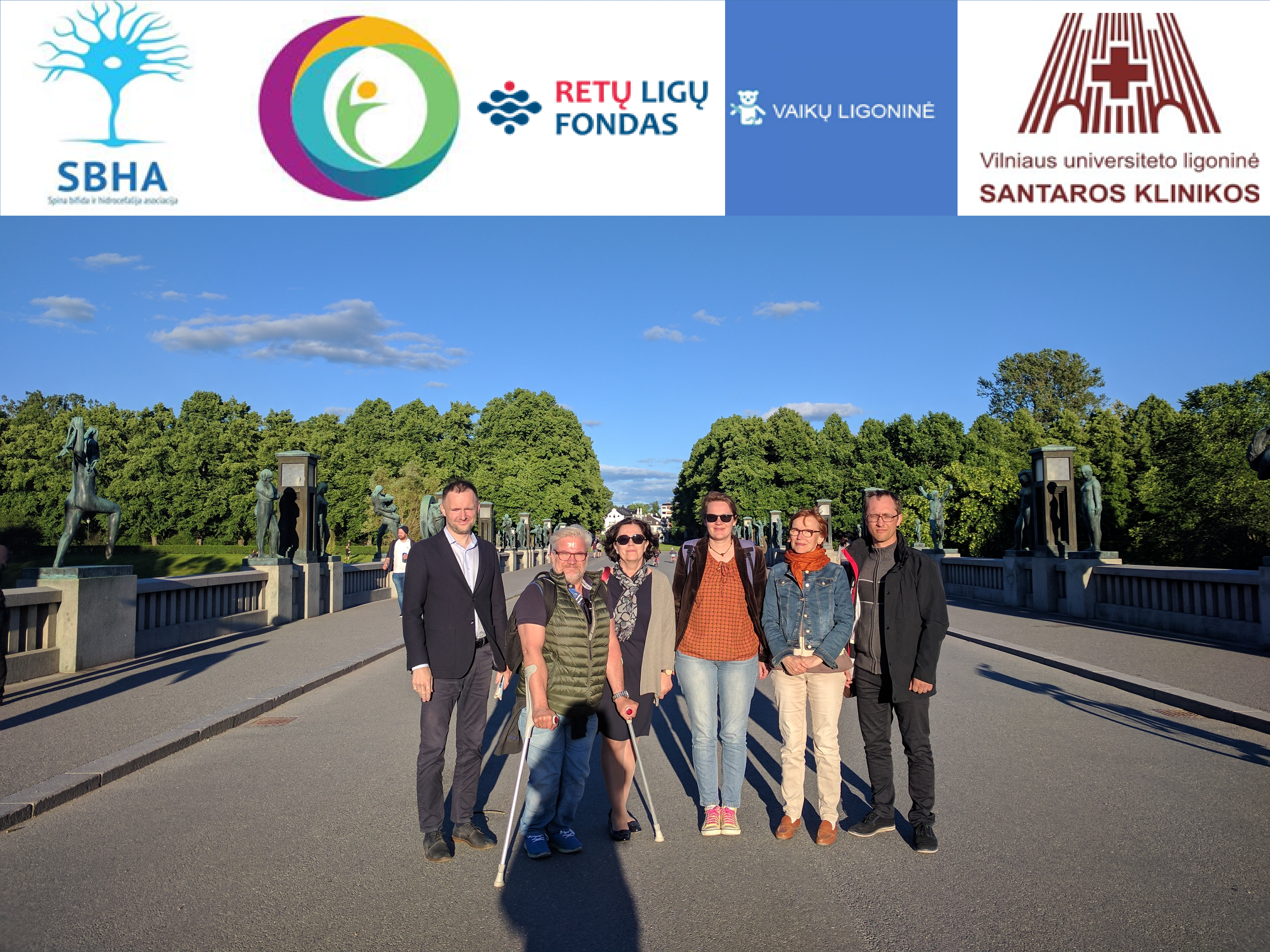On 19-21 June, Spina Bifida and Hydrocephalus Association and Children’s Rare Disease Association representatives have visited one of Norway’s rare disease centres TRS National Resource Centre for Rare Disorders (www.sunnaas.no/trs) near Oslo. The hospital was visited by Rūta Ūdraitė-Mikalauskienė, patient representative from Spina Bifida and Hydrocephalus Association, Danas Čeilitka, patient representative from Children’s Rare Disease Association, prof. Rimantė Čerkauskienė, head of Coordinating Centre for Children’s Rare Diseases, Romualdas Sinkevičius, head of Pediatric Physical Medicine and Rehabilitation Department, and Dovilė Jonuškaitė, physician in Coordinating Centre for Children’s Rare Diseases.
The aim of the visit was to get acquainted with rare disease patient care system in Norway through spini bifida patient care. Topics, discussed with TRS Centre team included rare disease centre structure, activities, financing, services provided, specialist team structure, tasks of each member, patient long-term care plan and the way it is ensured, information and psychological support for patient families and its organization, systemic view at bladder catheterization. TRS activities include these target groups: patients, their parents, brothers, sisters, other family members and relatives, patient’s healthcare providers, teachers, caretakers, other educational staff, social services providers, employers, co-workers, society. TRS centre is oriented towards psychosocial problems, case management, communication, methodological help to specialists working near the patient.
TRS centre employs 35 people: physician who has family doctor’s experience, phychologist, kinesiotherapist, ergotherapist, nurses, teachers, social workers, media specialist, administrator and IT specialist. People in the centre work with various rare diseases causing skeletal impairment: skeletal dysplasias and short stature related to it, osteogenesis imperfecta, arthrogryposis multiplex congenita, multiple osteochondromas, Marfan syndrome, Loeys-Dietz syndrome, Ehlers-Danlos syndrome, limb dysplasias, spina bifida. During the visit, Lithuanian team was acquainted with spina bifida team activities during a discussion. Discussion was attended by entire team: Lena Haugen – nurse and team leader, Kerstin Lundberg Larsen – kinesiotherapist, Kusbeth Brøndberg – social worker, Helen Solås – psychologist, Marie Hoff – physician (previously family doctor).

